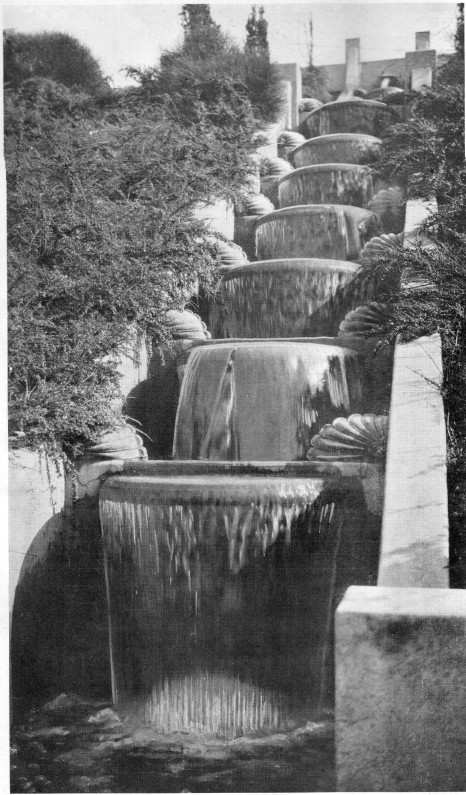
After the smoke from the fires up north forced a reschedule, we had a small but "lively" group for the Walk of the Dead. In addition to clearer skies in December, we also had great weather—sunny and not too warm. After talking a bit about customs around death like the Day of the Dead, a brief glossary of terms, and some of the symbols we might see on grave markers, we headed off.
Our first stop was Chapel of Memories, also known as the Oakland Columbarium. It opened in 1901 as an independent business, but now is run by nearby Chapel of the Chimes. The buildings are mostly full of smaller niches. While a few are tagged "before need", most are occupied.
Just up Howe St. is Oakland's oldest existing cemetery, St. Mary's Cemetery, a Catholic cemetery which started a bit before nearby Mountain View Cemetery. There were earlier cemeteries closer to downtown, but as Oakland grew, they got in the way of development. The Oakland Cemetery (1852-1857) was at 8th and Oak. The Webster St. Cemetery (1857-1867) was between Webster and Snow Park. Most of the residents
moved to Mountain View or St. Mary's c.1872-76, but not all:
An excavating machine hit a metal coffin and spilled the contents: “the left hand and arm
nearly to the elbow protruded from the ground, the hand drooped over gracefully from the
wrist. Portions of the coat and vest were visible, as were the outlines of the face, but over these
still rested a coating of fine earth.” Oakland Tribune April 28, 1877
After a brief stop at 4460 Howe Street, which was home at different times to a superintendent of St. Mary's, a florist, and a granite and marble showroom, we went in the top entrance of Chapel of the Chimes. That took us into the newer areas, but down some flights of stairs and around a couple of corners, and we were into an older part, which was designed by noted architect Julia Morgan. Five different architecture firms worked on the structure over the years. The oldest part was originally a station for the streetcar which stopped at the top of Piedmont Avenue.
From there it was through the gates of Mountain View Cemetery, but into Home of Eternity Cemetery, a Jewish cemetery run by Temple Sinai. They purchased land from Mountain View in 1865. Besides more familiar religious symbols on the grave markers, there we saw some kohanim hands, which mean the person was of the priestly tribe of Aaron. Leonard Nimoy used a modified version of the gesture as the Vulcan greeting in Star Trek.
Stepping past a row of trees took us into Mountain View Cemetery, which at 224 acres, is by far the largest cemetery in Oakland.
First we went into one of several large mausoleums on the Mountain View grounds, which contains the remains of Oakland city council member Frank Ogawa and his family. He and his wife were imprisoned in an internment camp along with other Japanese Americans during WWII. Their daughter, Nancy Lynne Ogawa, was born in the Topaz camp and died there. That mausoleum also contains the remains of my grandparents, my aunt and uncle, and my aunt's father, Dr. Edward Lundegaard. Dr. Lundegaard served as a surgeon in the county coroner's office from 1946 to 1954, and then was elected coroner in 1954.
We wound our way up the hill to "Millionaire's Row", where the likes of "Borax" Smith, mayor Samuel Merritt, and the Crockers of Crocker Bank fame are buried in some sizable and lovely mausoleums. The air quality was better than November, but it was hazy enough it didn't show off the great view. That view, plus the park-like setting (MVC was designed by Frederick Law Olmsted, who designed Central Park in New York City) are part of why people used to visit their grave sites before they needed them, and countless Oaklanders still walk, run and admire the views today.
We finished by the Infant's Plot by the Main Mausoleum, in view of the Pauper's Plot. We didn't have time to continue down Piedmont Avenue and check out the cemetery-related businesses, including florists, grave marker carvers (former), and funeral homes, but we got a nice overview of part of Oakland inhabited mostly by the dead.






































































